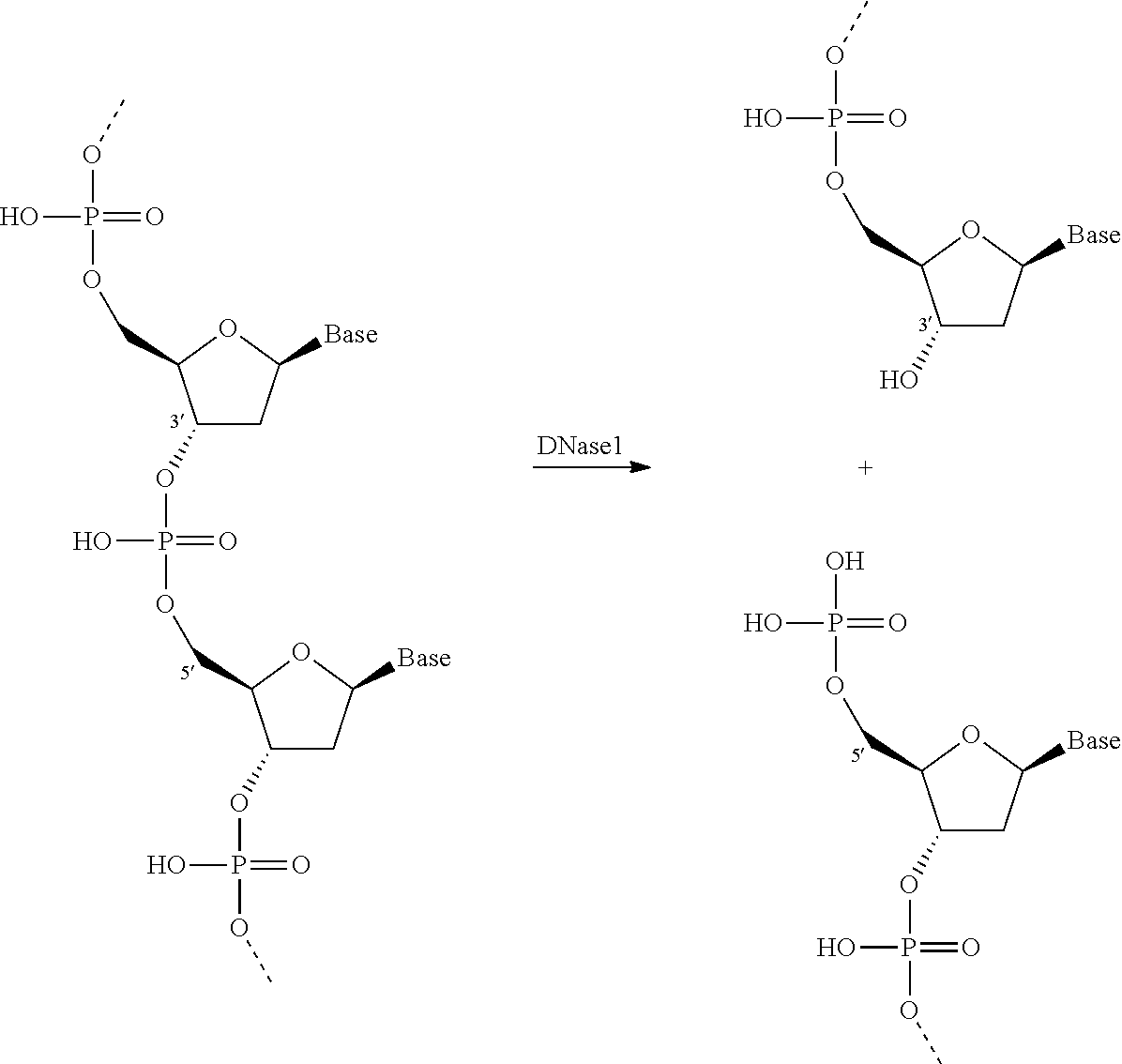Method of treating a fabric
a textile surface and textile technology, applied in detergent dyes, detergent compounding agents, enzymology, etc., can solve the problems of fabric whiteness and soil buildup over time, and achieve the effect of increasing the hydrophobicity of the textile surface and increasing the deposition of nuclease enzymes
- Summary
- Abstract
- Description
- Claims
- Application Information
AI Technical Summary
Benefits of technology
Problems solved by technology
Method used
Image
Examples
example 1
Deposition Test on Model Surfaces Using DPI
[0263]In order to illustrate the increase of deposition of a nuclease enzyme on a hydrophobised surface, the following experiment was carried out: using a Dual Polarized Interferometer (Farfield Analight Bio200) we recorded the deposition of the nuclease (SEQ ID NO 1) on two model surfaces.
[0264]First a neat quartz hydrophilic surface: An Anachip™ chip from Farfield was treated by exposing it to UV light for 30 minutes using a UV / Ozone Procleaner™ (Bioforce Nanosciences). The surface is then highly hydrophilic.
[0265]A second surface was hydrophobically modified: A UV-O3 treated Anachip™ was dipped in a 1% solution (Chloromethyl)trimethylsilane (Sigma Aldrich) in toluene for 30 seconds and rinsed with ethanol. This method grafts silane on the silica surface increasing the concentration of methyl groups on the surface, thus rendering it hydrophobic.
[0266]The treated chips were then placed in the DPI instrument and put in contact with a flow o...
formulation examples
Examples 1-7
Heavy Duty Liquid Laundry Detergent Compositions
[0270]
1234567Ingredients% weightAE1.8S11.00 10.00 4.006.30———AE3S————2.40——LAS1.404.008.003.305.008.0019.00 HSAS3.005.103.00————AE90.4 0.6 0.3 0.3 ———AE8——————20.00 AE7————2.406.00—C12-14 dimethyl Amine Oxide0.300.730.230.37———C12-18 Fatty Acid0.801.900.600.991.20—15.00 Citric Acid2.503.961.881.980.902.500.60Optical Brightener 11.000.800.100.300.050.50 0.001Optical Brightener 3 0.0010.050.010.200.50—1.00Sodium formate1.600.091.200.041.601.200.20DTI 10.320.05—0.600.100.600.01DTI 20.320.100.600.600.050.400.20Sodium hydroxide2.303.801.701.901.702.502.30Monoethanolamine1.401.491.000.70———Diethylene glycol5.50—4.10————Chelant 10.150.150.110.070.500.110.804-formyl-phenylboronic acid————0.050.020.01Sodium tetraborate1.431.501.100.75—1.07—Ethanol1.541.771.150.89—3.007.00Polymer 10.10—————2.00Polymer 20.300.330.230.17———Polymer 3——————0.80Polymer 40.800.810.600.401.001.00—1,2-Propanediol—6.60—3.300.502.008.00Structurant0.10—————0.10...
examples 8 to 16
Unit Dose Compositions
[0271]These examples provide various formulations for unit dose laundry detergents. Compositions 8 to 12 comprise a single unit dose compartment. The film used to encapsulate the compositions in PVA.
[0272]
89101112Ingredients% weightLAS14.514.514.514.514.5AE3S7.57.57.57.57.5AE713.013.013.013.013.0Citric Acid0.60.60.60.60.6C12-15 Fatty Acid14.814.814.814.814.8Polymer 34.04.04.04.04.0Chelant 21.21.21.21.21.2Optical Brightener 10.200.250.010.010.50Optical Brightener 20.20—0.250.030.01Optical Brightener 30.180.090.300.01—DTI 10.10—0.200.010.05DTI 2—0.100.200.250.05Glycerol6.16.16.16.16.1Monoethanol amine8.08.08.08.08.0Tri-isopropanol amine——2.0——Tri-ethanol amine—2.0———Cumene sulphonate————2.0Protease0.800.600.071.001.50Mannanase0.070.050.050.100.01Amylase 10.200.110.300.500.05Amylase 20.110.200.10—0.50Polishing enzyme0.0050.05———Nuclease0.0050.050.0050.0100.005Dispersin B0.0100.050.0050.005—cyclohexyl dimethanol———2.0—Acid violet 500.030.02Violet DD0.010.050.02Stru...
PUM
| Property | Measurement | Unit |
|---|---|---|
| contact angles | aaaaa | aaaaa |
| water contact angle | aaaaa | aaaaa |
| water contact angle | aaaaa | aaaaa |
Abstract
Description
Claims
Application Information
 Login to View More
Login to View More - R&D
- Intellectual Property
- Life Sciences
- Materials
- Tech Scout
- Unparalleled Data Quality
- Higher Quality Content
- 60% Fewer Hallucinations
Browse by: Latest US Patents, China's latest patents, Technical Efficacy Thesaurus, Application Domain, Technology Topic, Popular Technical Reports.
© 2025 PatSnap. All rights reserved.Legal|Privacy policy|Modern Slavery Act Transparency Statement|Sitemap|About US| Contact US: help@patsnap.com



